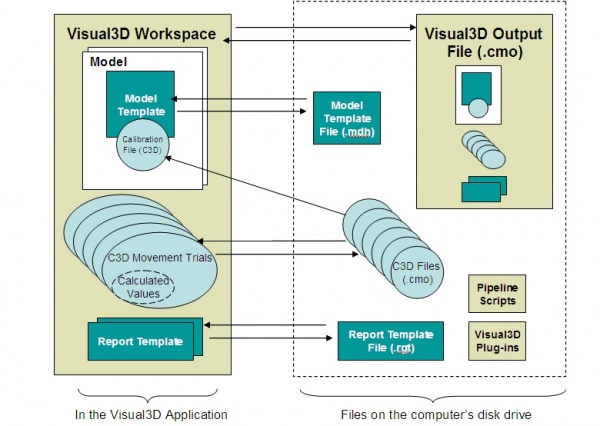CMO Format

The C3D file format was specified for the storage of one trial. Visual3D combines trials for data analysis. To accommodate multiple trials in a single file, C-Motion designed a proprietary format called the CMO format that contains an entire movement analysis including multiple movement trials (e.g. multiple C3D files), a static calibration trial, biomechanical model descriptions, reports (including graphs, formatting, and normative data) and relational information of the trials. This proprietary format is intimately linked to the Visual3D software because it stores the Visual3D workspace.
At any time while using Visual3D, you can save the entire workspace into a CMO file (file extension .cmo, meaning "C-Motion output"). You can then safely quit Visual3D, and at some future time run it again and re-load the CMO file to begin working again exactly where you left off. The CMO file format does not save calculated values in the workspace (e.g. the results of model-based calculations) but it does contain all of the information necessary to Recalc these values upon loading.
CMO files are useful as repositories for long-term storage of experiment records. Even if the original input data files are unavailable, their contents remain safely stored and can be reviewed (but not altered). The CMO file also contains copies of various Visual3D settings which affect computed results (e.g., your laboratory coordinate system). This ensures that you will obtain identical results every time you load a CMO file, even if that file was produced with different settings than you usually use. This fact makes CMO files useful for exchange of experimental results between different laboratories, or between students and professors, etc.
Although still supported for legacy reasons, the CMO file format has been superceded by the CMZ file format.